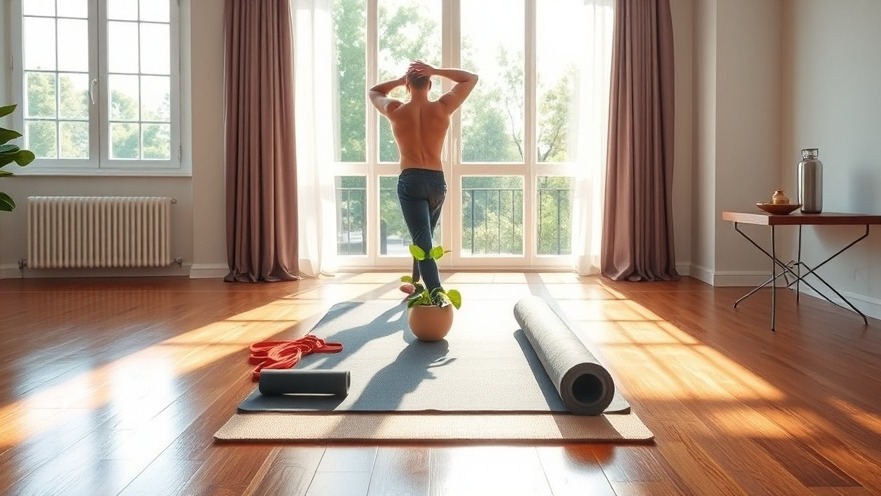
Transform Your Life: How Five Simple Exercises Can Fix Common Issues
If you've ever experienced aches and pains in areas like your back, shoulders, or knees, you're not alone.
These are common problems for many, hindering mobility and affecting overall well-being. As a physical therapist, I’ve seen firsthand how just five exercises can help.
These moves not only target specific muscle groups, but also enhance overall body function. Best of all, they can be done anywhere, anytime. These back-focused exercises pair well with your pain relief plan. Let's dive into the five key exercises that can streamline your fitness and help alleviate pain.
In '5 Exercises That Fix 95% Of Your Problems', the discussion dives into crucial exercises for alleviating common ailments, sparking deeper analysis on our end.
1. Revitalizing Your Back with Face Pulls
We often neglect the upper back, yet strengthening this area is crucial for good posture and reducing pain. The first exercise recommended is the Face Pull. You can perform it using a door frame.
Start by placing your forearms against the frame, with feet inside the door.
Lean back slightly, and with your forearms, pull your body gently towards the frame. This movement engages your mid-back muscles, counteracting the slouch that tends to develop from poor posture.
Pro Tip: Hold the position for 3-4 seconds to enhance muscle endurance. Feel free to increase the angle and range of motion for an added challenge.
2. Hang Strong: The Dead Arm Hang
Next up is a staple move for spinal health: the Dead Arm Hang. All you need is a sturdy pull-up bar, which is an excellent investment for body conditioning, costing around $15.
Simply hang from the bar, allowing your body to decompress. This exercise not only improves core strength but also enhances shoulder mobility, an essential factor in overall strength and injury prevention.
Another variation of this move uses your toes for support, which targets spinal decompression. Letting your arms hang freely helps alleviate the pressure in your lower back, making this a fantastic exercise for those dealing with spinal or disc issues.
3. Strengthen Your Glutes with the Hip Drop
Understanding the glute medius's role is vital, especially for those suffering from low back pain.
The Hip Drop is an essential exercise you can do at any wall. Stand on one leg, lean against the wall, and let your hip drop outwards.
Then, push away from the wall with your glutes as you lift the opposite leg. This movement strengthens the glutes and helps alleviate dysfunction that transfers to the lower back.
As you progress, aim for several repetitions on each leg to really feel that glute contraction. Building this strength means less work for your back, significantly diminishing the likelihood of pain.
4. Bridge and Reach for Maximum Mobility
The Bridge and Reach is another exercise that greatly aids back health by activating the gluteus maximus, a major contributor to hip extension.
Start by lying on your back with bent knees and feet flat on the ground. Lift your hips into a bridge while simultaneously reaching one arm over your head.
This not only engages your glutes, but also increases mobility in your thoracic spine, helping alleviate stiffness and tension in your back. It’s a powerful combo that tackles multiple areas of concern with one fluid motion.
5. Dial Up Your Upper Body with the Di Bomber Push-Up
Our final exercise is the Di Bomber Push-Up, which can be adjusted based on fitness level.
Begin in a downward dog position. Lower yourself toward the ground, scraping your chest along the way, and push up on the other side. This version engages your chest, triceps, and shoulders without compromising form.
For those just starting, you can modify it by doing the push-up on your knees. All variations strengthen the upper body while promoting flexibility and reducing tension in your lower back.
The Bonus: Knee-Friendly Functional Exercise
While the five exercises above are designed for general wellness, here's a bonus for those struggling with knee issues.
This unconventional yet effective exercise can be done on a staircase. By stepping up onto a stair, and then returning to the ground with a controlled reverse lunge, you actively engage the quads and glutes, building strength and support around the knee.
By continuously moving through the motion, you'll improve overall stability and strength, minimizing the risk of knee pain.
Act Now: Implement These Exercises Today!
To truly reap the benefits of this routine, it’s essential to integrate these exercises into your daily life.
Whether you’re at home, in the office, or out at the park, these moves require minimal space and equipment. Start today and work towards a pain-free future!
Looking for more fitness inspiration? Visit our Fitness Focus section — and check out other wellness categories on Sacramento Living Well.
---
Authored by the Sacramento Living Well Editorial Team — a publication of DSA Digital Media, dedicated to highlighting wellness, local living, and inspiring community stories throughout Greater Sacramento.
 Add Row
Add Row  Add
Add 





Write A Comment